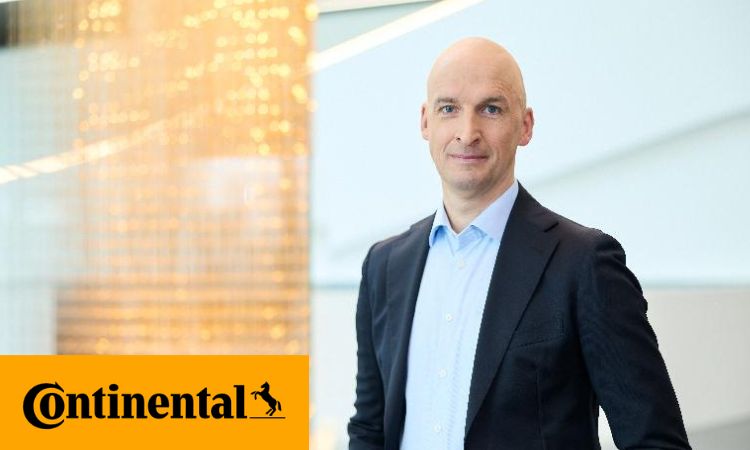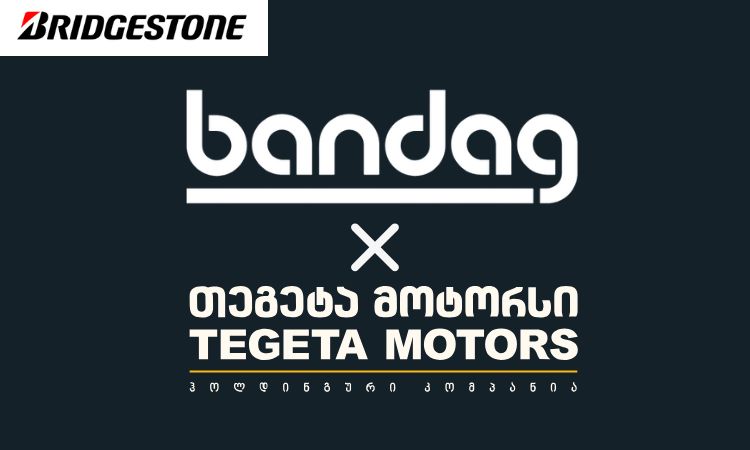Weibold Academy: Entering the Big Game. Navigating Due Diligence
Weibold Academy article series discusses periodically the practical developments and scientific research findings in the end-of-life tire (ELT) recycling and pyrolysis industry.
This article is writen by Claus Lamer, the senior pyrolysis consultant at Weibold, and Andreas Kyriakou, the senior partner and senior strategy consultant at Weibold. One of the goals of this articles is to give entrepreneurs in this industry, project initiators, investors and the public, a better insight into a rapidly growing circular economy. At the same time, this article series should also be a stimulus for discussion.
For the sake of completeness, we would like to emphasize that these articles are no legal advice from Weibold or the author. For legally binding statements, please refer to the responsible authorities and / or specialist lawyers.
Authors foreword
Funds, family offices, banks, and large industrial companies are setting up investment budgets of considerable magnitude (with tens or hundreds of millions of euros in fresh capital) for ELT pyrolysis projects to grow up to an industrial scale. This not only opens enormous opportunities for the ELT pyrolysis industry but also poses challenges for a technology going disruptive. In order to meet the expectations of all stakeholders, a multi-layered approach is necessary and the consideration of a multitude of aspects from different perspectives must be considered.
As many pyrolysis projects are preparing for funding and execution, this article series navigates the challenges that await them on the road to industrial-scale operation, such as answering Due Diligence, raising technology readiness levels (TRL), permitting sites, securing feedstock, getting materials tested and certified, settling off-take agreements, establishing data rooms, and setting up a corporate structure.
Over the past years, Weibold has done a multitude of economic analyses on a great variety of business models, both as architects of new concepts for facilities (Western hemisphere and developing world) and as auditors for funding institutions, checking major investments in large, multi-facility projects (Europe and USA).
Funding institutions’ expectations
To successfully place an investment in a tire pyrolysis project, one should be aware of the risk profiles that different classes of funding sources impose on their target investments. In general, projects in our industry will draw cash from any of the following potential sources (listed here in approximate order of likely subordination priority):
- Debt-like instruments
o Lenders (senior debt from banks)
o Bond underwriters
o Government-subsidized loans
o Small business loans from house banks - Equity-like instruments
o Private equity funds
o Strategic investor (off-taker) investment funds
o Venture capital funds
o Angel funding
o Project initiators’ own funding (corporate or personal +friends and family)
o Subsidizing governmental and NGO funds
Each one of these entities has different requirements regarding risk mitigation in the project. Depending on investment size, they will perform an internal or independent third-party analysis of the project in the form of a Due Diligence.
Time-consuming and expensive but essential: Due Diligence
Due Diligence is the process of examining a company or project to assess its suitability for investment. It involves collecting information about the potential target and evaluating it to determine whether it is a good fit with the potential investor's goals, objectives, and risk profile. Due Diligence helps investors determine whether the business model is functional and whether the project initiators have the necessary skills and experience to be successful.
Due Diligence typically begins with a review of balance sheets and/or financial planning, cash flow statements, and other reports. This information helps investors evaluate the financial health of the company or project, its current debt, and its future growth prospects. In addition, verification of letters of intent (LoI), binding contracts and agreements (if any), intellectual property rights, and other legal documents are carried out.
Due Diligence also includes evaluating the company management team. Do the founders have enough experience in their respective fields and the necessary skills, and can they handle possible problems?
Investors also consider the competitive landscape of companies. This includes researching competitors and analyzing market trends to determine whether there is a viable market opportunity for the product. In addition, all potential risks should be considered: such as regulatory changes or technological developments that could affect the company.
Uncovering Risks and Red Flags through Due Diligence
Due Diligence involves researching and reviewing the details of an investment opportunity to identify risks or red flags.
During Due Diligence, investors typically focus on three key areas: finance (financial DD), technical operations (technical DD), and legal considerations (legal DD). Investors also look at past performance (if any), current trends, and future growth prospects.
For existing companies, operational Due Diligence focuses on assessing a company's business activities. This includes auditing businesses such as sales, manufacturing, and distribution. Investors look for efficiency and effectiveness in a company's operations to ensure that it is well managed and running smoothly.
Due Diligence is an important step in the investment process that should not be overlooked. Taking time to thoroughly research a potential investment opportunity can ensure investors are making an informed decision about where to invest their capital. With careful Due Diligence, investors can identify potential risks or red flags before investing their money and make better decisions about where to allocate their resources.
Navigating Due Diligence
In the intricate world of investments, Due Diligence stands as a pivotal process where investors conduct a comprehensive assessment of a company before committing their financial resources. To facilitate informed decision-making, investors seek an array of critical information:
- Financial Health: Investors engage in the scrutiny of financial statements, tax records, audit reports, and more to gain insights into the company's fiscal well-being and growth potential.
- Business Strategy: Investors meticulously examine an updated business plan, aiming to comprehend the company's objectives, strategies, and competitive advantages.
- Management Expertise: The capabilities and experience of the company's leadership team come under scrutiny, as their proficiency plays a vital role in the company's potential for success.
- Legal Framework: Permits and legal agreements, including contracts and intellectual property rights, are subject to review to ensure the company's legal standing.
- Market Insight: Data pertaining to market trends and industry analysis provide the necessary context for evaluating the company's operations.
- Customer Understanding: A profound understanding of the customer base becomes paramount for assessing revenue streams and the sustainability of the company's business model.
- Risk Assessment: Potential risks, encompassing legal, regulatory, and technical considerations, undergo a thorough examination to mitigate uncertainties.
Being well-prepared and presenting this multifaceted information in an organized manner remains indispensable in this process.
Avoiding Due Diligence Mistakes
During the Due Diligence process, companies of all types can encounter challenges that may extend the process, increase costs, or even hinder their access to potential investments. Some common mistakes that companies make during Due Diligence are:
- Lack of Transparency: Transparency is vital in building trust during Due Diligence. Failing to disclose pending legal issues, disputes, internal conflicts, or past business missteps can create doubts and jeopardize the investment deal.
- Poor Documentation Quality: Maintaining accurate and up-to-date documentation is essential. This includes policies, organizational structures, technical specifications, and other critical documents. Inadequate documentation can lead to delays and leave a negative impression on potential investors.
- Legal Oversights: Legal errors often involve improper business structures, incomplete or inadequate contracts, unclear intellectual property ownership, or unfiled tax reports. Resolving these issues during Due Diligence can be time-consuming and may affect investor confidence.
- Lack of Preparation: Being unprepared for Due Diligence can devalue a company significantly. Startups, in particular, must allocate the necessary time and resources to ensure a smooth Due Diligence process.
- Insufficient Technical Focus: For companies with a technical component, technical Due Diligence is a critical aspect. Investors need to comprehend the company's technical architecture, scalability, technology stack, and other technical elements. Startups should be ready to present and explain these technical aspects.
- Team Evaluation: The competence of the team is pivotal to a company's success. Investors seek assurance that the team possesses the necessary skills and capabilities to execute the project effectively. Companies should ensure that their team members are competent and capable.
- Overreliance on Third-Party Reports: While third-party reports can be valuable, companies should not solely rely on them during Due Diligence. Conducting independent research and analysis is essential to supplement and validate the information provided by external sources.
The Due Diligence process is a critical phase for all companies seeking investments. Avoiding these common mistakes, regardless of the company's nature, can streamline the process and enhance the prospects of securing investment opportunities.
Current trends and experiences
Having analysed a number of tire pyrolysis projects in the final funding stages on three continents we can observe an emerging trend.
As most projects of any substantial size will invariably contain a significant debt portion, the debt provider will usually dictate the risk profile of the overall investment. This means that (a) the completion, schedule, and performance risks must be contractually rolled off to the technology suppliers and to the contractors and subcontractors who will execute the engineering, procurement and construction (EPC) efforts (CAPEX risk considerations) and that (b) feedstock and off-take flows must be highly secure (OPEX risk considerations).
Most of the time the lenders will require not only that execution is conceived and planned that way, but that it is ankered in binding contracts before the final investment decision (FID) is made.
To achieve this, a significant amount of work, including pre-construction engineering, marketing and negotiating, and legal preparation must be completed for the Due Diligence to even start.
Especially for projects started by entrepreneurs (as opposed to already established corporations), this represents two often underestimated burdens:
- The effort and cost of completing this preparation before the funding for commencing construction (usually in the range of several million dollars) is available, and
- An extra layer of cost in the CAPEX to cover any contingencies and the risk of not being able to produce the volume and quality of products at the revenue level and timeframe planned (usually an additional 12% to 20% of the total erection costs).
What still exacerbates the difficulties is that the currently established core (reactor) technology providers are themselves still in the funding stages to fund their equipment production efforts and EPC integration capabilities and often can only provide performance guarantees that are inadequate for the projects’ funding institutions’ risk profiles.
The devil is in the detail
What we observe is that if the contractual framework for the construction of the planned facility is not adequately planned ahead of time it leads to unwelcomed surprises during the Due Diligence efforts. From the project managers’ perspective there are two issues that should be addressed before submitting a project to investors.
- The risk mitigation profile is only as good as the contracts between multiple parties (contractor, EPC contractor, EPC management contractor, technology supplier(s), other subcontractors). The choice of words in the legal instruments can make a huge difference in the perceived and real risk that remains with the project-owning entity in which the funding institutions invest.
- Another factor that is often forgotten early on is that the subordination priority of the different classes of investments that are targeted must be clearly worked out if multiple debt-like instruments (f.ex.: a senior debt instrument and a small business loan) and/or multiple classes of equity investments (f.ex.: an investment by a strategic off-taker and a private equity investment) are planned. Who will get first dibs on the free cashflows when production begins? The priority order and conditions will have a significant impact on the debt terms and on the valuations for the equity share distributions.
Conclusion
In the intricate world of investments, Due Diligence is a critical process that involves a comprehensive assessment of a company. This process demands a thorough examination of various aspects, including financial health, business strategy, management expertise, legal compliance, market understanding, customer base, and risk assessment. Proper preparation and organized presentation of this information are crucial.
Project initiators should be aware of the risk mitigation requirements of their potential investors and make an effort to adequately plan and diligently prepare the legal, commercial and financial aspects of their projects ahead of soliciting investors. Often this requires a 2-phase financing strategy in which the pre-engineering, costing, negotiations and legal frameworks are completed in the first phase.
Avoiding common Due Diligence mistakes, such as underestimated CAPEX, uncorroborated feedstock and off-take agreements, lack of transparency, poor documentation, legal oversights, unpreparedness, insufficient technical focus, team evaluation, and overreliance on third-party reports, is essential for a successful investment process.
On the other hand, funding institutions, whether debt-oriented or equity-oriented, should remain flexible in light of the fact that the tire up-cycling industry’s technologies, processes, and best practices - although already established and further maturing - cannot always provide the same level of hermetically sealed risk profile that they might be used to from other industries. These sustainable projects are nonetheless viable, and will provide a valuable contribution towards their sustainability goals with healthy returns.
In summary, Due Diligence is a safeguard that allows both investors and companies to make well-informed decisions in the complex world of investments, leading to more secure and successful financial engagements.
Weibold is an international consulting company specializing exclusively in end-of-life tire recycling and pyrolysis. Since 1999, we have helped companies grow and build profitable businesses.









